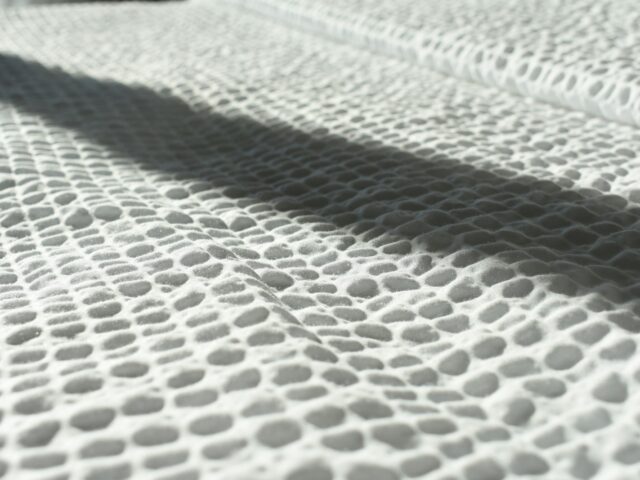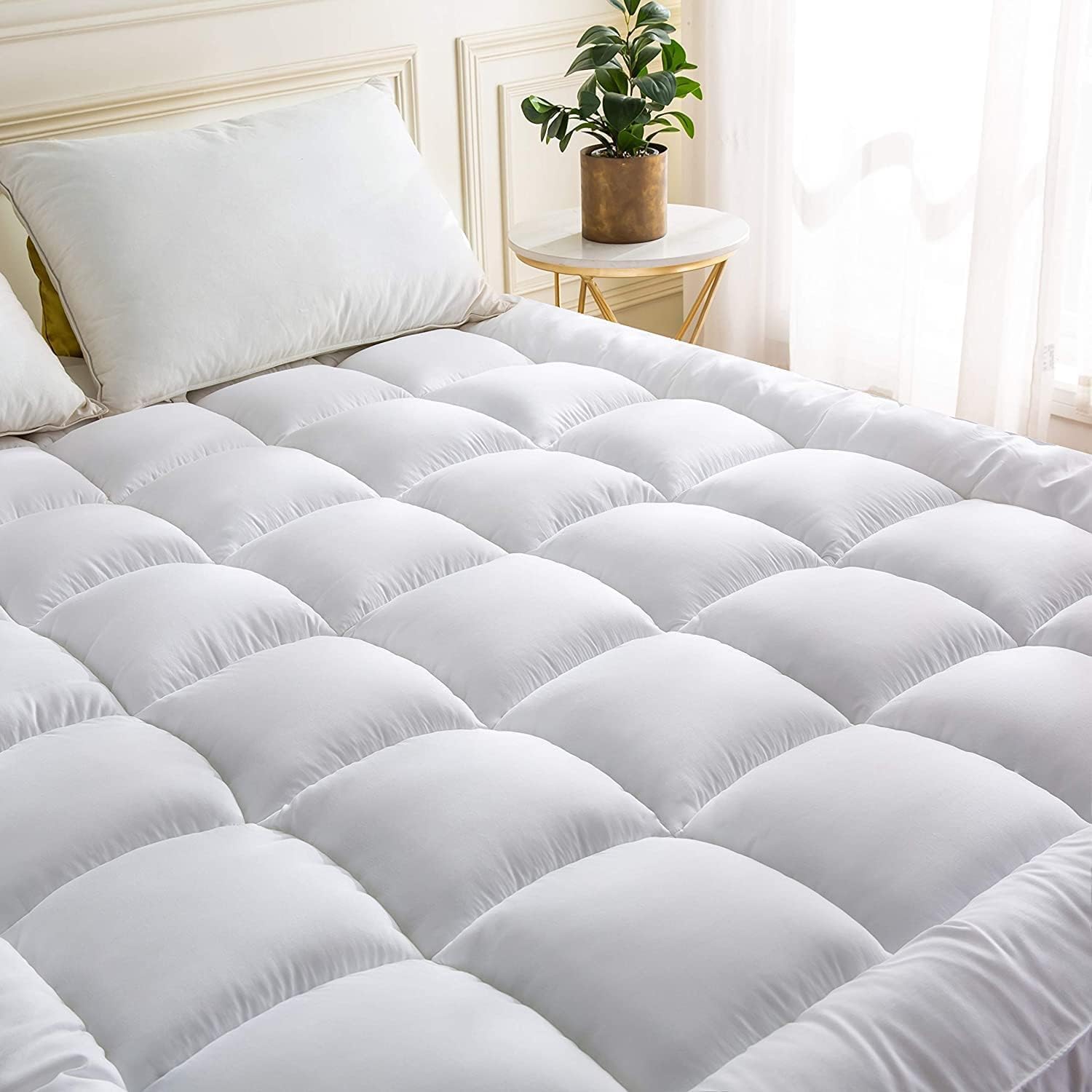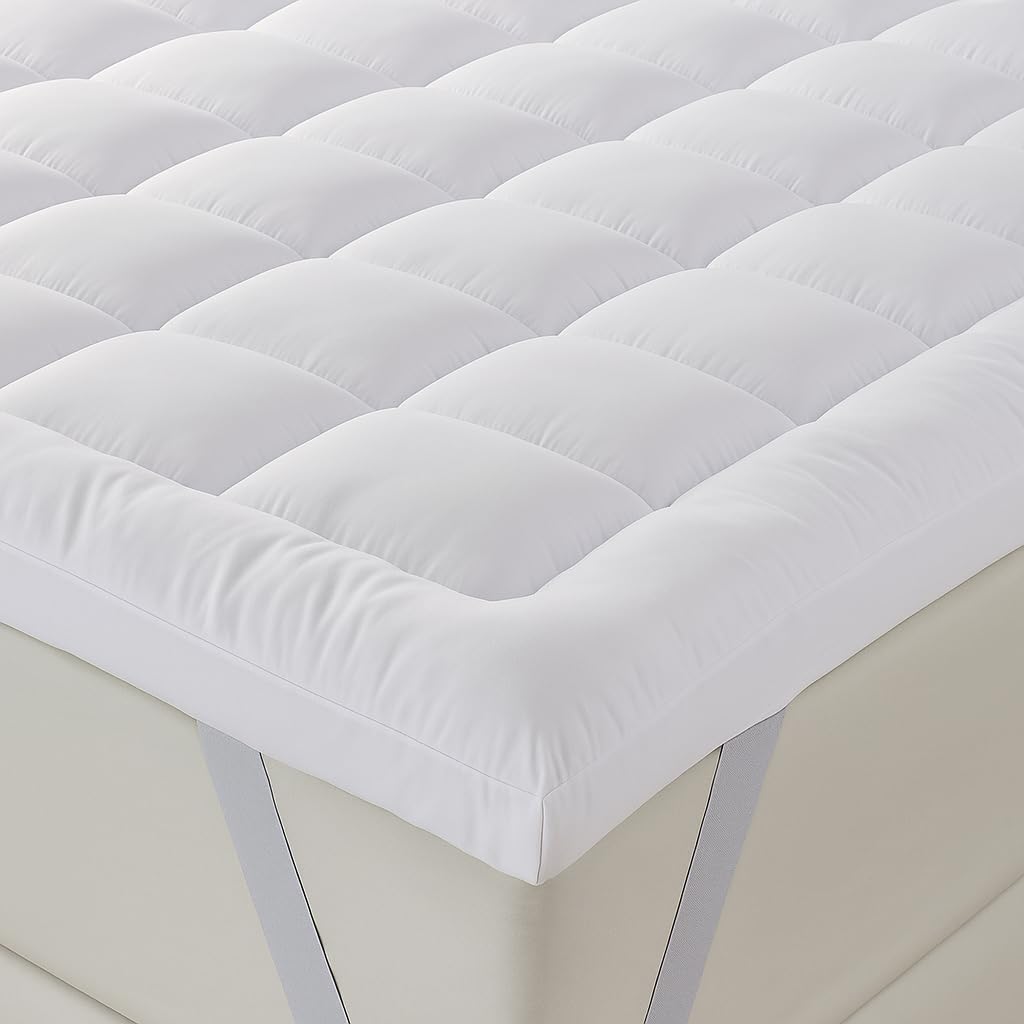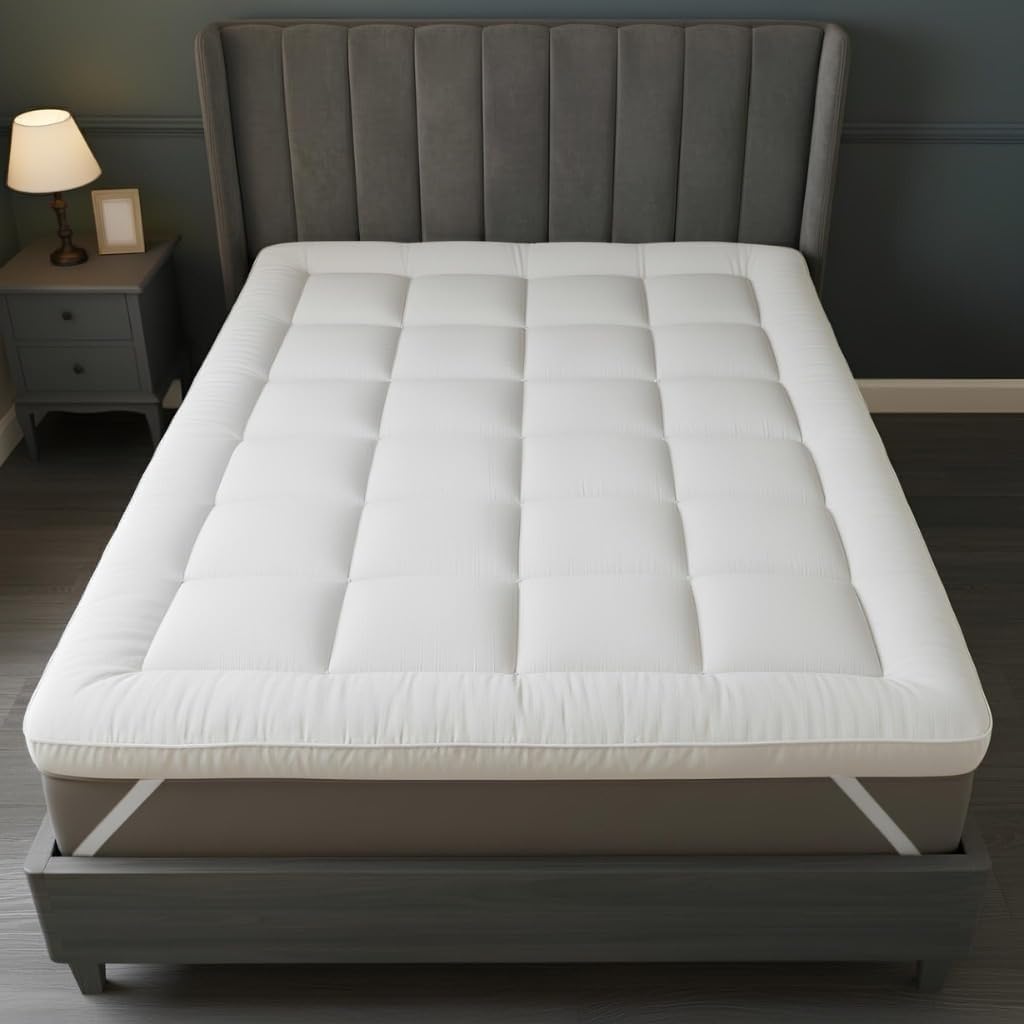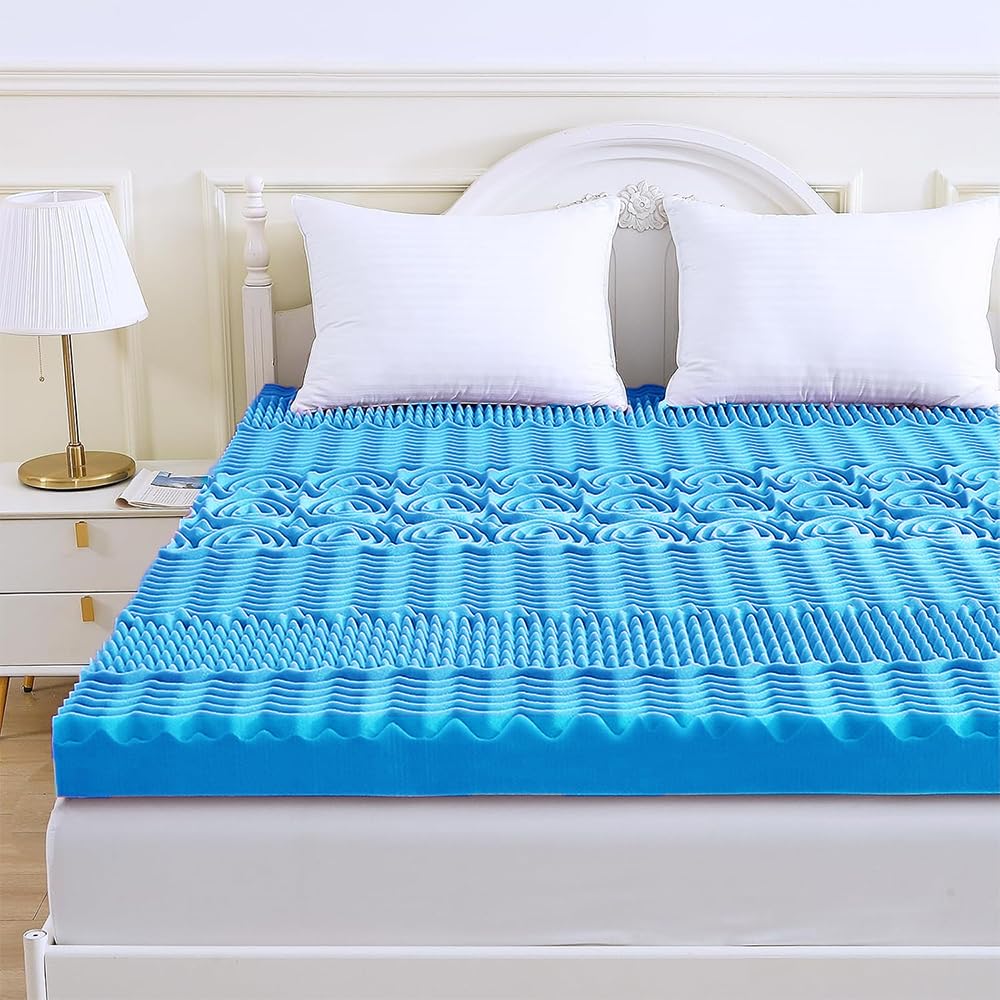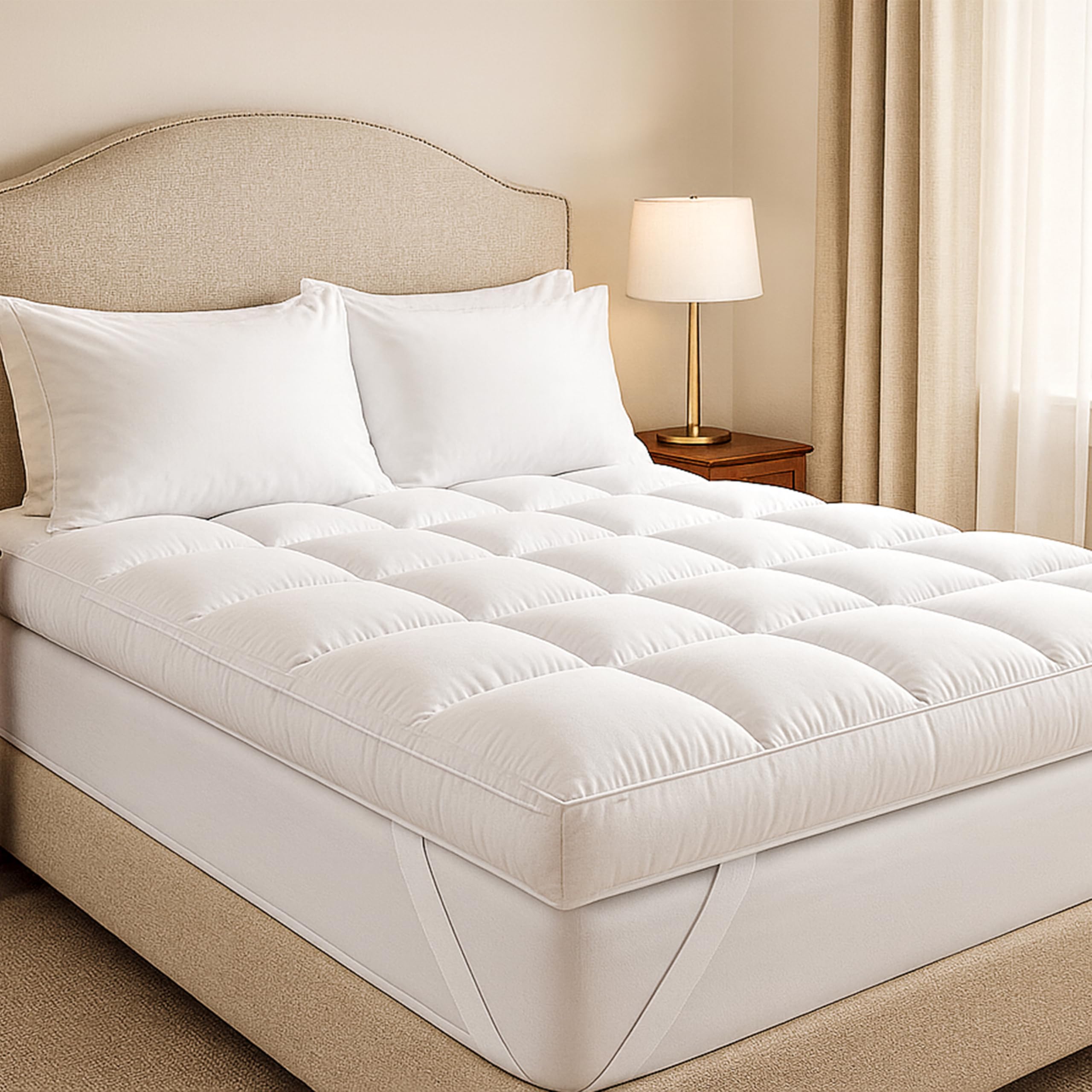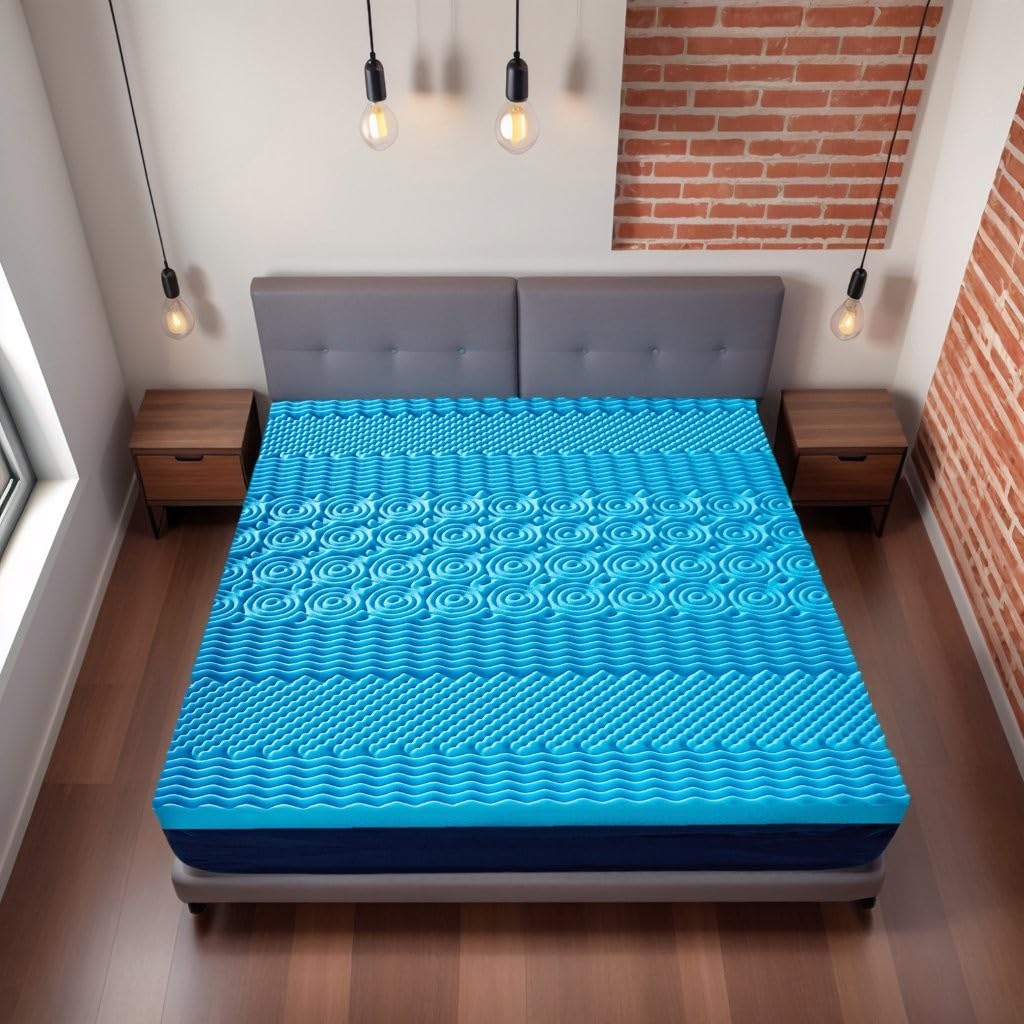When back pain spoils your sleep, changing the surface feel of your mattress can make a real difference. A mattress topper is a practical way to do that without buying a new bed. Latex and memory foam are the two materials most people consider first. Both can improve comfort, but they work in different ways. This guide explains how each topper supports your spine, how they feel when you turn, how warm they sleep, and which one tends to help most for common back pain scenarios so you can buy with confidence.
Seasonal warmth usually comes from duvets that balance weight and airflow in UK bedrooms.
How Memory Foam and Latex Support Your Back
Memory foam is designed to respond slowly to body heat and pressure. It softens under the heavier parts of your body and fills the gaps under lighter areas, creating an even cradle. That deep contouring can reduce pressure points and allow muscles to relax. It is particularly good at cushioning the shoulders and hips for side sleepers. Latex responds quickly and compresses more like a spring. It lifts the body rather than letting it sink deeply, which can keep your lower back from dropping too far. This buoyant support suits back sleepers and combination sleepers who roll from side to back. Both can help, but the way they achieve support feels different on the body.
Spinal Alignment by Sleep Position
For side sleepers with back pain, the goal is to let the shoulders and hips sink enough so the spine forms a straight line from neck to lower back. A medium to thick memory foam topper often achieves this because it allows more depth under those points while supporting the waist. For back sleepers, the goal is to keep the pelvis from tilting. Latex shines here because it resists deep sink while still giving some cushion. For stomach sleepers, alignment is more challenging. A firmer, thinner topper in latex or a firmer foam can reduce lower back arching, but changing to side or back is usually more effective for pain relief.
Ease of Movement and Edge Feel
Memory foam’s slow response can make turning feel more deliberate. If you enjoy settling into one position and staying there, that steady cradle is comforting. If you turn frequently, latex makes movement easier because it rebounds immediately. Edge feel also differs. Latex tends to feel a little stronger near the edges, which helps if you sit on the side of the bed or like to sleep near the edge. Memory foam edges can feel softer unless the base mattress provides strong edge support underneath.
Temperature and Breathability
Heat is a common concern. Memory foam can run warmer because it is dense and wraps the body. Look for open cell foam, perforations and breathable covers in cotton, bamboo or lyocell to reduce heat build up. A slightly thinner foam can also help if you balance pressure relief with airflow. Latex generally sleeps cooler. The material has an open structure and pin holes that let air circulate. If you are a hot sleeper or live in a warm room, latex offers a comfort gain without a big temperature cost. Pair either topper with breathable sheets and a lightweight duvet in summer for best results.
Thickness and Firmness Choices
The amount of change you feel depends on thickness. A 5 to 7 centimetre topper creates a subtle but noticeable change and works well when your mattress is only slightly too firm. A 7.5 to 10 centimetre topper delivers maximum pressure relief, which side sleepers often need. Choose firmness based on your body and base mattress. A firm mattress plus a medium or plush topper makes sense. A soft mattress will not pair well with a very soft topper because alignment can suffer. If you are unsure, start with a medium feel so you can evaluate whether you need more or less cushion.
When Each Material Helps Most
Choose memory foam if you have shoulder or hip sensitivity that wakes you, if you sleep mainly on your side, and if you value deep pressure relief. Choose latex if you have lower back discomfort when lying on your back, if you move a lot at night and want to turn easily, or if you tend to sleep hot. Many back pain cases involve both pressure relief and support. In that situation, a medium latex topper can be a good compromise for back sleepers, and a thicker open cell memory foam topper suits side sleepers on very firm beds.
Care, Smell and Setup
Both materials arrive compressed and may have a mild odour that fades with airing. Allow 24 to 72 hours for full expansion on a flat surface. Use a breathable, removable cover to protect the topper and make cleaning simple. Foam should be spot cleaned only. Latex can be wiped lightly and aired. Rotate the topper monthly to distribute wear, especially if you sleep in the same spot each night. If you use a waterproof protector, place it on the mattress under the topper and then use your fitted sheet over the topper to preserve airflow at the surface.
Practical Examples
A back sleeper on a firm pocket sprung mattress who wakes with a tight lower back can try a 5 to 7 centimetre medium latex topper to add gentle cushion without sag. A side sleeper on a very firm foam mattress with shoulder pain can try a 7.5 to 10 centimetre open cell memory foam topper to allow deeper sink at the shoulder while maintaining support at the waist. A combination sleeper who alternates side and back can try a 5 centimetre latex topper to balance turning ease with some relief. Check how you feel after a week, then adjust bedding or topper thickness as needed.
Supportive, breathable options for back pain feature in mattress toppers for UK beds; alignment improves further with pillows matched to sleep position.
FAQs
Which topper lasts longer? Latex generally keeps its feel for longer than memory foam. High quality memory foam still offers good life when protected with a cover.
Will a topper fix a sagging mattress? No. It improves surface feel but does not correct deep structural problems. Replace a failing mattress, and use a topper to refine comfort on a sound base.
Is there a smell when new? Mild odour is normal with both materials after unpacking. Air the topper for a day or two and it will fade.
